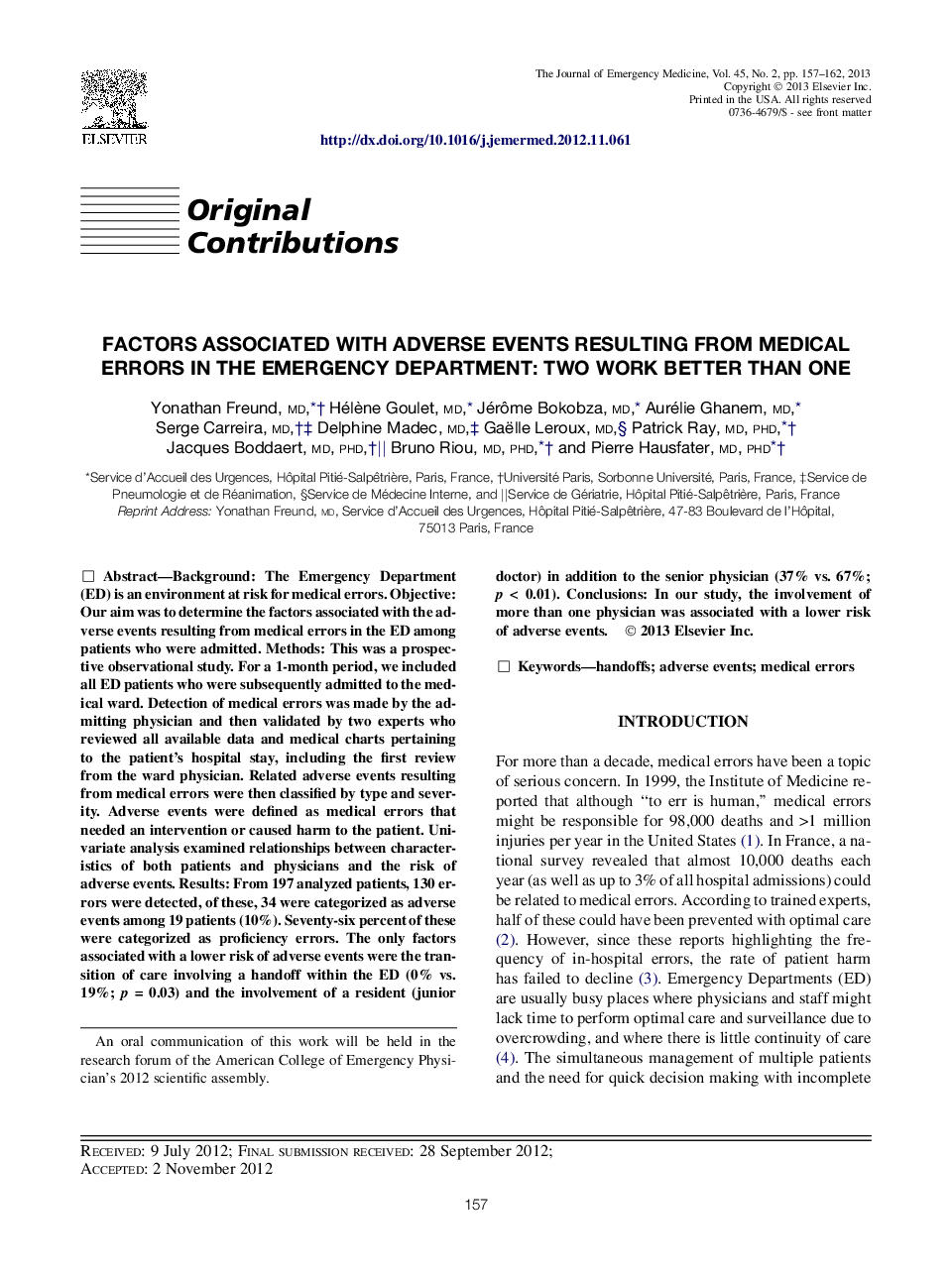| Article ID | Journal | Published Year | Pages | File Type |
|---|---|---|---|---|
| 3246712 | The Journal of Emergency Medicine | 2013 | 6 Pages |
BackgroundThe Emergency Department (ED) is an environment at risk for medical errors.ObjectiveOur aim was to determine the factors associated with the adverse events resulting from medical errors in the ED among patients who were admitted.MethodsThis was a prospective observational study. For a 1-month period, we included all ED patients who were subsequently admitted to the medical ward. Detection of medical errors was made by the admitting physician and then validated by two experts who reviewed all available data and medical charts pertaining to the patient’s hospital stay, including the first review from the ward physician. Related adverse events resulting from medical errors were then classified by type and severity. Adverse events were defined as medical errors that needed an intervention or caused harm to the patient. Univariate analysis examined relationships between characteristics of both patients and physicians and the risk of adverse events.ResultsFrom 197 analyzed patients, 130 errors were detected, of these, 34 were categorized as adverse events among 19 patients (10%). Seventy-six percent of these were categorized as proficiency errors. The only factors associated with a lower risk of adverse events were the transition of care involving a handoff within the ED (0% vs. 19%; p = 0.03) and the involvement of a resident (junior doctor) in addition to the senior physician (37% vs. 67%; p < 0.01).ConclusionsIn our study, the involvement of more than one physician was associated with a lower risk of adverse events.
